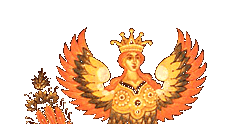Catalogue:Search by:Sale!LoginSubscribe to newsYour E-mail Comes out once a month! We accept PayPal
|
Palekh
About PalekhSmall town of Palekh is located in 350 kilometers to the east from Moscow.This is about 50 kilometeres from town of Ivanovo, to which region Palekh belongs. Palekh was previously a center of icon painting and as such it is mentioned several times in the documents of the 17th century.Icon painting was a family occupation and the craft was passed on from one generation to another. The Revolution of October 1917 dealt a heavy blow to icon painting in Palekh and throughout Russia. Not only the holy images themselves but the artists who made them became enemies to Communist regime and were persecuted or arrested. As icon and mural paintings were no longer in demand many masters returned to agriculture others tried to go to other handicrafts such as shoemaking, carrier's trading, wickering bast shoes, making toys and dish. Some Palekh masters went to different towns looking for job. In 1918 the former icon-painters established the First Palekh Co-operative of Decorative Art but it soon fell apart. In 1922 Ivan I. Golikov being in Moscow saw a black papier-mache box from Fedoskino in the Handicraft Museum. He painted a papier-mache piece using techniques of icon-painting and technology of the Lukutin lacquer work and had a success. In 1923 Palekh masters won the first price at the All-Union Exhibition of Agriculture and Industry in Moscow. Succesful exhibitions of their first works in Moscow and Venice inspired the artists, and on the 5th of December 1924 seven Palekh masters I.I.Golikov, I.M.Bakanov, A.I.Zubkov, I.I.Zubkov, A.V.Kotukhin, V.V.Kotukhin and I.V.Markichev organized an Artel of Ancient Painting. The new times demanded new themes and subjects. Indeed their paintings abound in peasantry and revolutionary themes, such as reflecting the heroism of the people, reaping, hay making fishing, hunting, circle-dancing, merrymaking, horse-riding. From the very beginning Palekh painters made generous use of folk motives and poetry of Pushkin, Lermontov, Gorky and others.
The most difficult task for Palekh artists was to draw on a thing having form and volume. The range of articles was very wide: brooches, jars, small boxes, bead-boxes, cigarette-cases, snuff-boxes, powder-boxes, panels, glove boxes and so on. On the 10th anniversary of the Artel on March 1935 came several hundreds of delegates. The Great meeting was opened by a Minister of Education of the Russian Federation. The State Museum of Palekh Arts was opened by the date. The Artel was renamed into Association of Palekh Artists. Stalin's repressions of 1930-40s and tragedy of Great Patriotic War(World War II) did not pass Palekh artists,they lost some of their talents. In the 1960s many talented painters arrived at Palekh and among them there were Boris Yermolayev, Nikolay Golikov, Alexey Kochupalov, Anatoliy Peskov, Valentin and Tatiana Khodovs, Alexander Klipov, Stanislav Butorin, Gennadiy Kochetov, Irina Livanova, Nina Bogachyova. In the 1970s Vladimir and Natalie Buldakovs, Nikolay Gribov, Yuriy and Yekaterina Schanitsyns, Vadim Zotov, Anna Kamanina, Nikolay Lopatin, Lubov Nekrasova, Olga Subbotina joined them. All of them took the traditions of Palekh seriously and started working them out imaginatively. The 1980s can be called the period of the renaissance of Palekh Art with their names. Nowadays there are several different co-operatives and Workshops successfuly working in Palekh. Based on Vadim Shchanitsyn's Book-"Palekh and Palekhians"1994, published by Zet Industrial Co. |




